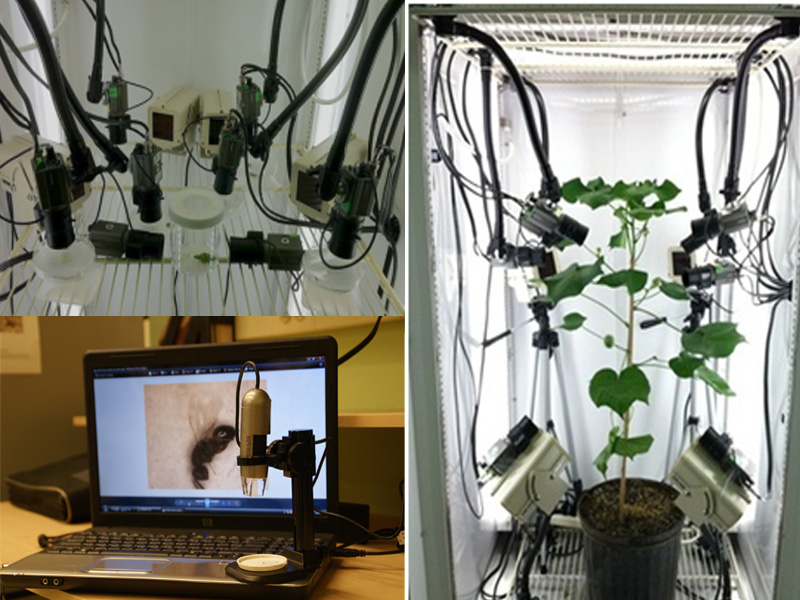 |
|
|
|

|
|||
| |
|||
In the old days, behavioral types of study on living organisms (animal or plant) rely on a successive observation with certain intervals. For example, feeding behavior of hunting billbugs to bermudagrass was observed every 4 hour (Huang & Buss 2009), so researchers had to stay up late until midnight and wake up early at 4am in order to do recording. Although it helps researcher be able to answer some important biological questions, the process was tedious and time consuming. With the development and application of modern technology, things can be facilitated! Monitoring of Pentatomid stink bugs feeding & movement on cotton plants using time-lapse videography system was an excellent example (Huang & Toews 2012). High resolution video cameras connected with digital video recorder generates a large dataset within a short period. It was not only time efficient but most importantly the researcher can sleep through the whole night! More recently, USB digital microscopes was developed for biological, engineering, medical, and mineralogical purpose which widely used by industries and universities. Although the size of the USB digital microscope is no bigger than the iphone, it provides up to 200X magnification with high resolution 1280 x 1024 video and high quality images. The small pocket-sized also benefits researchers to examine insect damage, parasitoid, and pathogen ID in the field even though it wasn’t originally designed for entomological purpose. For educational purpose, lecturer using the digital microscope can show the live images on the big screen to the class. An ongoing research project at Dr. Palumbo’s lab in Yuma Agricultural Center is conducted to evaluate bagrada bug (bagrada hilaris) feeding preference on several Brassica crops using USB digital microscope (Dino-Lite). Feeding damage, duration, and movement of bagrada bugs among the crops can be monitored simply by plugging the USB digital microscope into the computer. Since the cost of the USB digital microscope is relatively lower than the traditional microscope, we believe that this new technology has a huge potential for modern science and can be extensively applied for academia and industry.
Click picture to listen Click picture to listen to Ta-I To contact Ta-I Huang go to: thuang7030@email.arizona.edu
|
|||
| Back | |||
For questions or comments on any of the topics please contact Marco Pena at the Yuma Agricultural Center. |
|||
| Home | Cotton
| Veggies | Forages
| Grains | Citrus
| Crop x Crop Insects | Diseases| Weeds | Pesticides | Economics | News | Weather | Research | Photos | Contacts | General Info. Copyright © 2001 University of Arizona, College of Agriculture and Life Sciences Webmaster: Al Fournier (acis@ag.arizona.edu) |
|||

